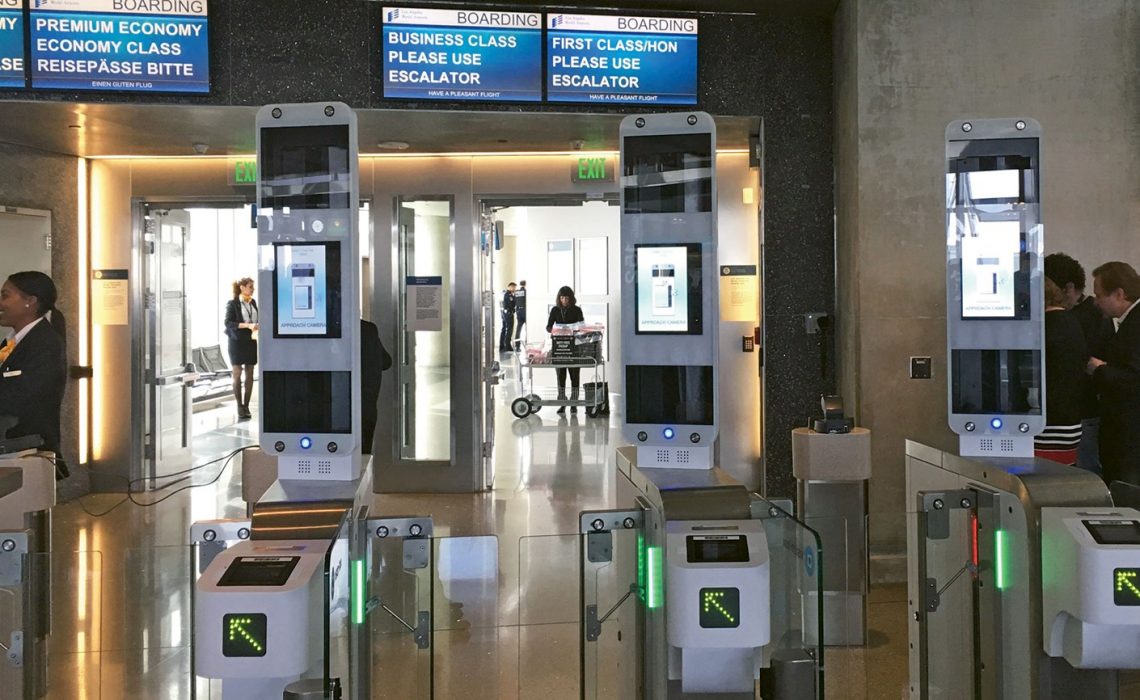
You might also like:
A trial project that is testing ticket- and passport-free international departures at Los Angeles Airport (LAX) is the first such project to involve more than one airline, making it one of the most advanced trials of its kind to date.
“The LAX technical demonstration is the first of its kind,” U.S. Customs and Border Protection spokeswoman Jennifer Gabris said.
Lufthansa and British Airways are now using the biometric self-boarding gates that LAX’s operator, Los Angeles World Airports, has installed in the Tom Bradley International Terminal.
LAX spokesman Frederick Badlissi said Qantas and Korean Air also plan to participate in the trial. Amadeus, which provided IT support to Lufthansa on the project, said the trial would continue into the summer.
The demonstration is part of CBP’s attempt to enable widespread use of biometric exits. The agency is under a congressional mandate to collect biometric data on all foreign nationals departing the U.S.
The exit checks will play a key role in advancing the federal government’s goal of more thoroughly tracking visa overstays by foreign nationals. Photos of international visitors will be held for years and can also be used to check facial images against FBI and terrorist watch lists. CBP’s goal is to process more than 97% of departing commercial air and sea travelers from the U.S. via biometric exits within the next four years.
For airlines, however, a big appeal of biometric exits is the prospect of improving boarding efficiency.
Facial recognition cameras photograph Lufthansa and BA flyers who use the biometric gates at LAX as they approach. The gates, designed by the Portugal-based technology company Vision Box, send the images to the CBP database for real-time verification. Within a few seconds, the system recognizes the passenger as having boarded, Lufthansa asserted in a news release. Neither a boarding pass nor a passport is necessary for display at the gate.
Lufthansa said it received positive customer feedback during initial trials and was able to board approximately 350 passengers onto an Airbus A380 in about 20 minutes. That is not a definitive gauge of efficiency, since Lufthansa’s typical configuration for the A380 is about 509 seats, and that takes an average of about 40 minutes to board.
CBP has been partnering with airlines and airports to deploy facial recognition exit tests since last year. Along with British Airways and Lufthansa, trial partners have included JetBlue and Delta. Trials have been conducted at Houston Bush, Houston Hobby, Chicago O’Hare, Miami, Washington Dulles, New York JFK, Las Vegas, Atlanta, Boston and Orlando in addition to LAX.
During the trial period, U.S. citizens who have privacy concerns related to facial recognition can opt out of the biometric exit trials and instead present their passport and ticket as usual, CBP’s Gabris said.
John Wagner, deputy executive assistant commissioner for CBP’s office of field operations, told Travel Weekly last fall that if a U.S. citizen does go through a biometric gate, his or her image will be held for only 14 days and will be used only for analysis of how the system is functioning. Wagner added that CBP already has biometric photos, via their passports, of all U.S. citizens engaging in foreign travel.
CBP’s biometric exit efforts are just part of a burgeoning, though still early-stages, worldwide move toward the use of facial recognition technology in various parts of the airport experience, including check-in, baggage check, security screening, international entry and even entry into airport lounges.
A survey by airport transport technology company SITA, a designer of facial recognition airport systems, found that over the next three years, 63% of airports and 43% of airlines plan to invest in biometric ID management solutions.
Source: travelweekly.com



